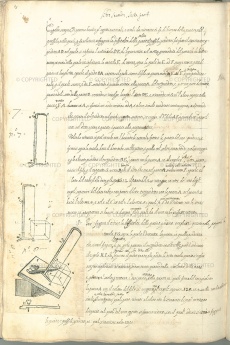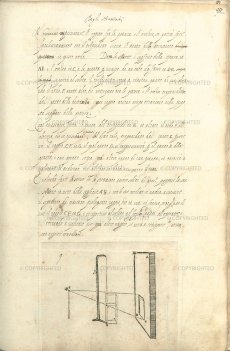"Treppiedetto" (Small Tripod)
From Inventions
Name adopted by the inventor (small tripod).
Contents |
Inventor
Ludovico Cigoli (1559-1613)
Historic Period
ca. 1610
Description
The treppiedetto (small tripod), is an accessory designed by Ludovico Cigoli to allow perspective drawings to be done “from real life” in the absence of the real object to be depicted. The idea undoubtedly derives from the similar accessory used with Wentzel Jamnitzer’s perspectograph. The device consists of a small tripod with a sliding string carrying an indicator (a knot or a ball) used to fix the height of the object’s significant points in space. To draw an absent object using a perspective instrument – in this case, Cigoli’s perspectograph – the painter must have a drawing of the object in plan and elevation. He first places the plan on the drawing board, in front of the perspectograph, and draws its perspective image, then proceeds to draw the points in elevation with the aid of the treppiedetto. He positions the tip of the foot through which the thread passes at a point on the plan, measures from the elevation the corresponding height at that point, transposes this dimension onto the thread by sliding the indicator up or down, and draws the perspective position of the indicator with the perspectograph.
Bibliographical Resources
Cardi, Ludovico detto Il Cigoli. Prospettiva pratica di fra Lodovico Cardi ... dimostrata con tre regole e la descrizione di dua strumenti da tirare in prospet. e modo di adoperarli et i cinque ordini di architet. con le loro misure. Firenze, Gabinetto dei disegni e delle stampe degli Uffizi, ms. 2660 A (risorsa digitale).
Images
Author of the entry: Filippo Camerota


